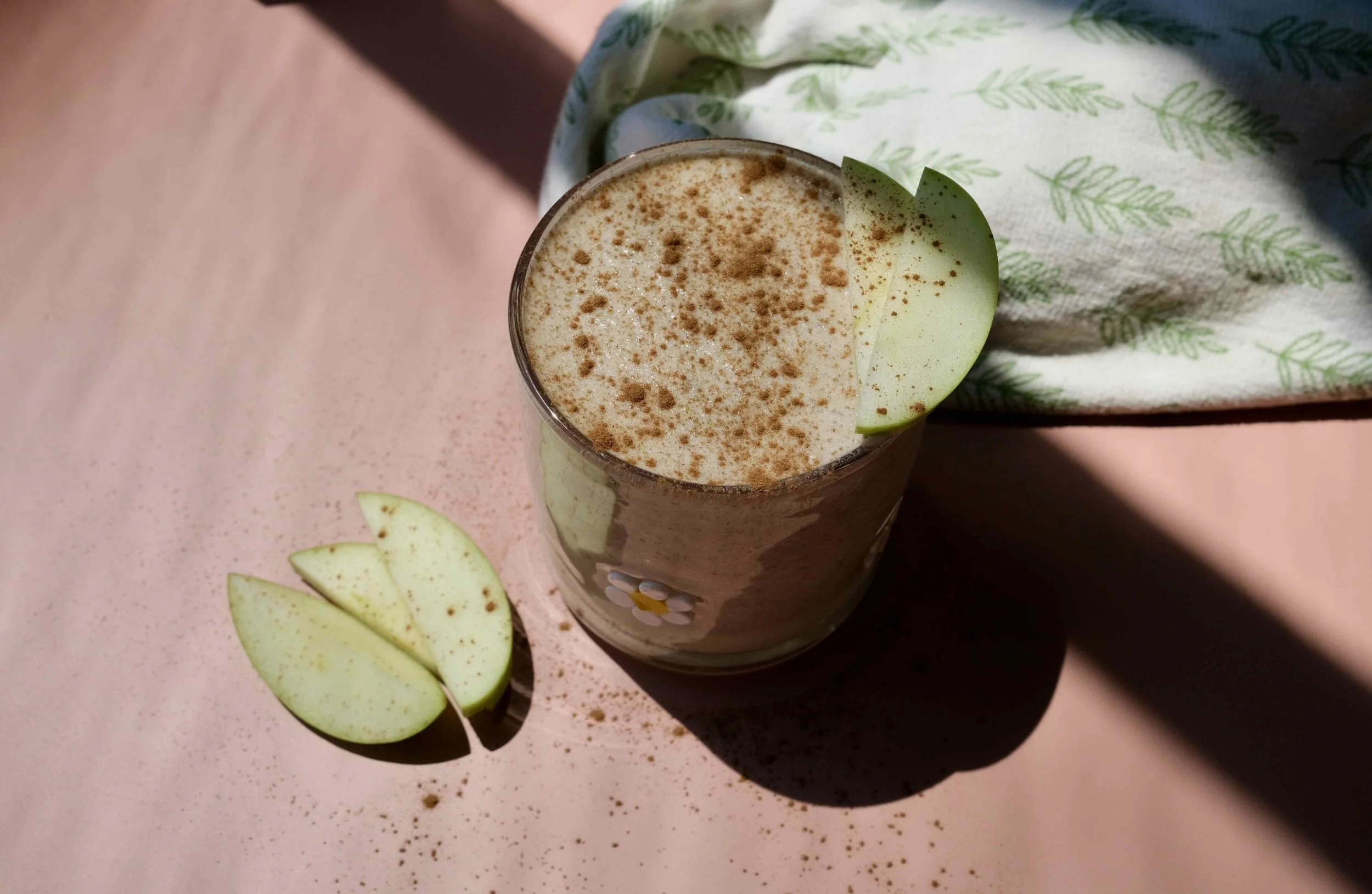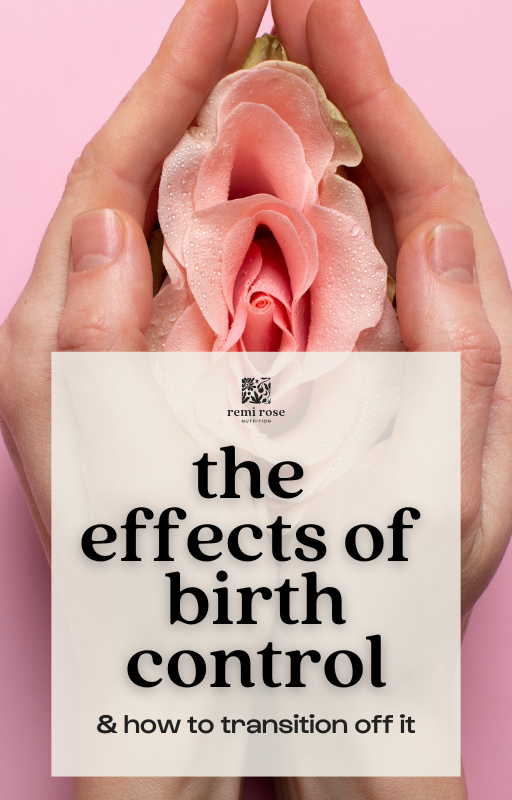Post-Pill Breakouts: How to Prevent Acne After Stopping Birth Control
If you’re planning to come off birth control (or recently did) and are worried about breakouts, you’re not alone. As your body transitions off the synthetic hormones of your birth control and back toward its natural cycle, your hormones may struggle to catch up.
Post-pill acne can become a real concern.
The good news is that you’re not without options, and in this guide we’ll discuss how you can use nutrition and subtle lifestyle tweaks to support your hormones and prevent breakouts after stopping birth control.
What Is Post-Pill Acne — and Why Does It Happen?
When your hormones are out of whack, chances are your skin will be too. It’s why so many women experience breakouts during puberty, their periods, and perimenopause. Those first few months coming off the pill are no different.
But it isn’t as simple as “fluctuating hormones = acne.”
When you’re on hormonal birth control, the synthetic estrogen suppresses the production of androgens (sex hormones), which are responsible for triggering the release of sebum — the skin oil that can go on to clog your pores. In many cases, this has helped cure women of hormonal acne — but the same is true in reverse.
Once you stop taking the pill, androgen levels may rise along with sebum production. In combination with an unsettled hormonal cycle, this can lead to cases of post-pill acne, especially if you were breakout-prone before.
When Does It Start & How Long Can It Last?
There’s no single timetable. Some women notice breakouts within weeks, while others won’t flare up until months after stopping the pill. The duration can be equally variable. Many factors play a role, from nutrition to lifestyle and underlying conditions.
Does Everyone Get Post-Pill Acne?
Not at all. It’s even possible that some women will experience clearer skin. Your risk varies based on things like your past acne history, the type of birth control you were on, and how sensitive you are to hormonal shifts.
How to Prevent Acne After Stopping Birth Control
1) Keep your energy (and blood sugar) steady
When meals send your energy on a spike-and-crash roller coaster, your body is forced to produce insulin to pull your blood sugar back into balance. An unintended consequence is that your body often ends up producing more sebum, which can clog pores and inflame breakouts.
Steadier meals can keep those signals quieter, which often shows up as calmer, less reactive skin. In fact, small clinical trials show that low-glycemic eating can lower IGF-1 within about two weeks and reduce acne over ~12 weeks.
How to make it doable:
Structure your meals around a protein + fiber + healthy fat formula that prioritizes steady energy (eggs + greens + oats; salmon + quinoa + big salad; bean-and-veggie bowls).
If you snack, pair carbs with protein (apple + almonds; crackers + hummus) instead of sweets solo.
Have coffee with food, not on an empty stomach, and sip water throughout the day.
2) Help your body’s “cleanup crew” (gut + liver)
Your gut and liver act as housekeeping for hormones. When they’re supported, your body processes and clears the hormones it no longer needs. But when they’re not, hormones can back up, causing imbalances and breakouts on your skin.
Proper nutrition can help support your microbiome — including your estrobolome, the engine for estrogen removal — and help your liver keep detox pathways open.
Simple upgrades that go a long way:
Aim for one cruciferous veggie most days (broccoli, cauliflower, kale) and one fermented food (yogurt, kefir, sauerkraut, kimchi).
Work toward 25–30 g fiber daily with beans, lentils, oats, berries, and plenty of veggies.
Hydrate and keep alcohol/sugar reasonable while things rebalance.
3) Replenish common nutrients depleted by birth control
When you’re on hormonal birth control, your liver has to work harder to remove synthetic estrogen and progesterone from your body. This can contribute to nutrient deficiencies. Some of these nutrients — like zinc, magnesium, and B vitamins — are important to oil balance, skin repair, and resilience.
Think of this step as refilling your body’s pantry so your skin has the tools it needs. Diet is critical, but a well-rounded multivitamin can help get you started as you get back into a rhythm.
Food-first focus:
Zinc & selenium: seafood, eggs, Brazil nuts
B vitamins & folate: leafy greens, legumes, whole grains, quality protein
Antioxidants: citrus, berries, peppers, sweet potato, sunflower seeds
Magnesium: greens, beans, nuts/seeds
4) Keep your skincare boring and gentle
Your skin barrier is like a raincoat. When it’s intact, your face is less reactive; when it’s stripped, everything feels angry. Over-cleansing can backfire by triggering more oil and redness. A simple routine, done consistently, usually beats a cabinet full of “fixes” — and it’s easier to stick with while the rest of your body recalibrates.
What “boring and gentle” looks like:
Non-stripping cleanser, non-comedogenic moisturizer, daily SPF.
If you need more help, add one proven active (e.g., azelaic acid, benzoyl peroxide, or salicylic acid).
Save stronger steps (retinoids or prescriptions) for a conversation with your dermatologist.
5) If you’re still struggling, loop in a pro
Sometimes post-pill acne requires a little additional help — and that’s not a failure on your part. Dermatology has effective tools for stubborn, painful, or cystic patterns, and a clinician can tailor options to your specific situation.
When to visit a clinician:
Severe/cystic acne, scarring, or significant pain
Acne persisting for several months without improvement despite consistent care
Signs of androgen excess (rapid new coarse facial hair, deep voice changes)
You’re pregnant or trying and unsure which treatments are safe
No menstrual period for ~3 months after stopping pills, or cycles remain very heavy/painful (to assess for other causes)
Other Changes You Might Notice After Stopping Birth Control
Coming off hormonal birth control can cause ripple effects beyond your skin, sometimes referred to as Post-Birth Control Syndrome (PBCS). Keep an eye out for:
Period changes (timing, flow, cramping) for a few cycles
Irregular or longer cycles at first as ovulation returns
PMS shifts: mood changes, bloating, breast tenderness
Headaches or migraines changing in pattern
Libido changes
Hair changes (shedding or texture shifts)
Skin changes beyond acne (oiliness/dryness)
Spotting between periods
Appetite, sleep, or energy fluctuations
Temporary weight fluctuations (often water retention)
While most shifts are temporary as your body settles back into its natural rhythm, it’s important to track symptoms, support your transition with nutrition, and reach out to a clinician when necessary.
Want a Step-by-Step Off-Ramp?
My eBook, The Effects of Birth Control — & How to Transition Off It, turns these steps into an easy six-week guide to balancing your hormones as you come off the pill. It includes a full, expert eBook on your hormones and the effects of birth control, weekly meal plans, a hormone-friendly recipe book, and more.
And if you’re looking for something even more personal, don’t hesitate to reach out for a free 20-minute consultation to discuss my 1:1 holistic nutrition services.






















